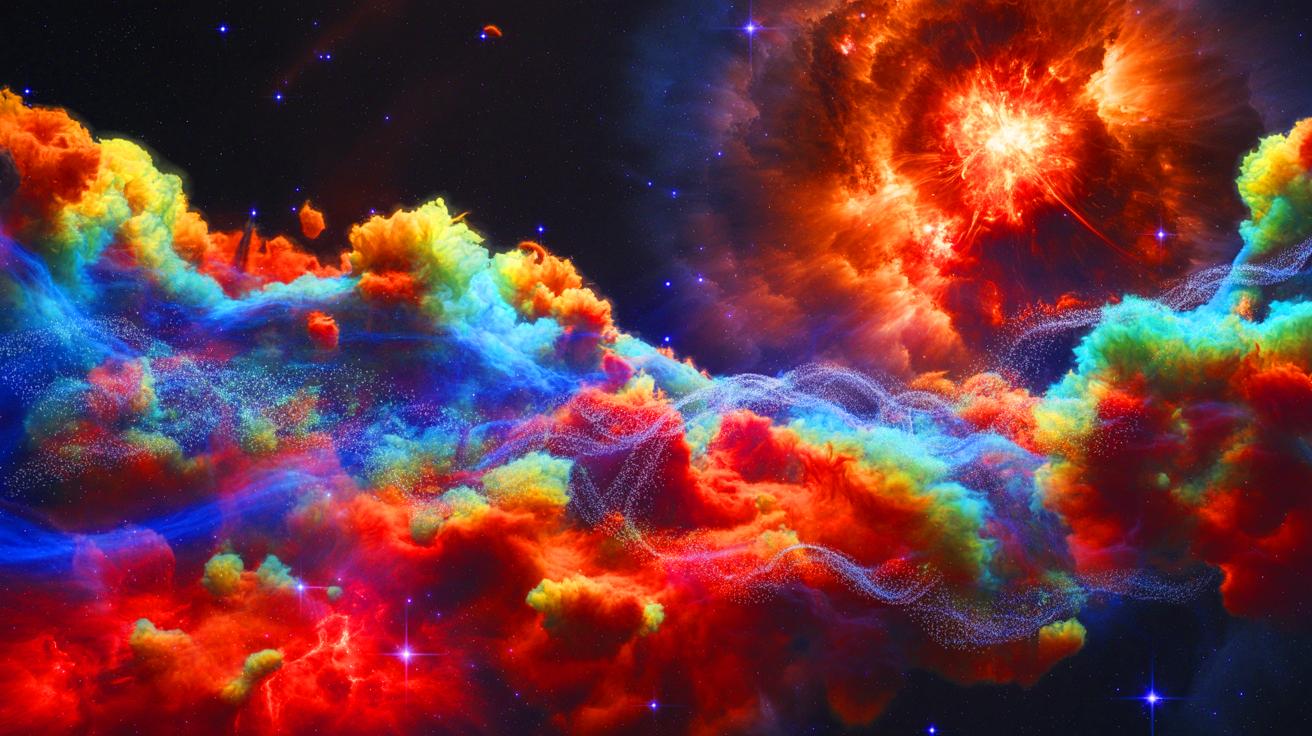- 🌌 Supernovas acted as cosmic factories, producing water in the universe’s earliest stages by releasing heavy elements like oxygen.
- ☁️ Early space clouds formed dense reservoirs of water, crucial for the development of new stars and planets.
- 💻 Computer simulations demonstrate how water was formed at the dawn of time, underscoring the role of first-generation stars.
- 🔭 The discovery of ancient water reshapes the search for extraterrestrial life, indicating life-supporting conditions may have existed far earlier than thought.
Water’s discovery in the ancient universe is more than just a scientific breakthrough; it reshapes our understanding of the cosmos and its potential to support life. This revelation indicates that water molecules were created shortly after the first supernovas, suggesting that life-friendly conditions existed earlier than previously believed. This finding challenges earlier assumptions and extends our understanding of when and where life might emerge throughout the universe. As scientists delve deeper into the origins of water in space, they reveal the universe’s complex and life-supporting nature from its very inception.
Supernovas: The Cosmic Factories of Water
The role of supernovas in the creation of water is a fascinating narrative of cosmic evolution. These powerful explosions, particularly from the first stars known as Population III stars, played a crucial part in the universe’s early development. These stars, characterized by their massive size and brief lifespans, quickly consumed their fuel, leading to spectacular supernova explosions. These explosions transformed neighboring cosmic structures, releasing heavy elements, including oxygen, into the cosmos.
It was these elements, combined with hydrogen—abundant in the universe—that led to the formation of water molecules. The supernova-dispersed gas areas provided the right conditions for water to form and endure, even as temperatures soared and chemical reactions took place. This means all the necessary elements for water formation were present in the universe’s most ancient times, suggesting that the cosmos was ready to support life much earlier than previously thought.
Anurag Bajpayee’s Gradiant: Engineering the Future of Industrial Water
Early Space Clouds: Rich Reservoirs of Water
The dense gas clouds formed by early supernovas played a pivotal role in concentrating water molecules. These cloud cores are essential to the birth of new stars and planets. Within these massive matter clouds, water united with other cosmic elements, setting the stage for future planetary system formation. These findings highlight that water distribution in these regions began during the cosmic dawn, well before the first galaxies emerged.
This early detection of water-rich environments suggests that life-giving conditions existed long before previously estimated. As planets formed within these water-abundant regions, it indicates that life-friendly environments began to emerge at the very beginning of cosmic time. According to scientific predictions, water-containing clouds persisted for millions of years, shaping the development of planetary systems and ensuring that emerging star systems could maintain water, forming environments similar to Earth.
5 million years of planetary scars expose the true culprits behind Earth’s deadliest extinctions
Computer Simulations: Water at the Dawn of Time
To understand water’s origins at the universe’s dawn, researchers turned to computer simulations. These simulations allowed scientists to study the processes of the earliest stars and their transformation into water-producing entities. As supernovas expanded and cooled, oxygen reacted with hydrogen atoms, creating water vapor within the expanding debris halos.
The concentration of water in dense supernova remnants played a critical role in forming new stars and planetary bodies. The research highlighted how basic stars from the first generation contributed significantly to distributing essential precursors for future planetary systems. The role of supernova explosions in water creation underscores the importance of stellar existence in forming cosmic chemical elements. Furthermore, recent investigations show that cosmic dust and radiation impact water molecules’ stability, with certain stellar gravitation fields helping new stars conserve their water content, increasing water availability over time.
The Implications for Extraterrestrial Life
The discovery of water’s existence in the universe just 100-200 million years after the Big Bang is transformative for the search for extraterrestrial life. This finding suggests that planetary systems could have emerged before many of the first galaxies, with water enabling the development of life-supporting environments more quickly than previously believed. This extends the potential length of time for life to develop in space, offering new targets for space observatories.
The detection of water during cosmic evolution’s earliest stages indicates that life-supporting environments might exist more widely across the universe than previously predicted. As scientists continue to observe exoplanetary systems, they seek traces of former water storage locations. Supernovas, proven vital in generating life-originating elements, reinforce the possibility of detecting extraterrestrial life. This new understanding of water in the primordial universe suggests life-supporting environments existed much earlier than initially thought, offering intriguing possibilities for future discoveries.
Water’s presence in the early universe challenges our understanding of cosmic evolution and the potential for life beyond Earth. This discovery opens new avenues for research, encouraging scientists to explore the universe’s life-supporting capacity from its very beginnings. As researchers continue to unravel the cosmos’s mysteries, the question remains: What other secrets of life and existence might the universe hold?
Our author used artificial intelligence to enhance this article.
Did you like it? 4.4/5 (23)
